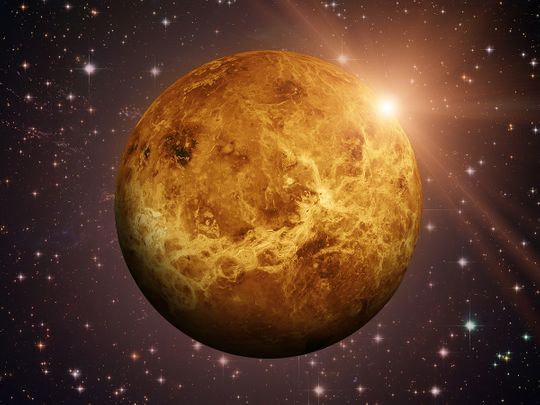
About 700 million years ago, something changed on the surface of Venus. For billions of years before that, researchers say, the surface had moderate temperatures and liquid water — with the possibility that back then, life in some form might have existed there.
That intriguing prospect is just one of many questions that remain unanswered now because of our lack of real knowledge about the planet that’s second-closest to our Sun.
It is also one of the reasons why the UAE has announced that it aims to send a mission to Venus to explore the surface and greatly enhance what little we do know about the planet.
The UAE mission to explore Venus and seven asteroids in our solar system is just one of a series of endeavours, missions and programmes that make up the Projects of the 50 to celebrate our nation’s founding.
The new project was announced by His Highness Shaikh Mohammad bin Rashid Al Maktoum, Vice-President and Prime Minister of the UAE and Ruler of Dubai. The UAE plans to be the first Arab nation to land on an asteroid at the end of the 3.6 billion-kilometre journey.
Mission to Venus
Putting this in perspective, the mission to Venus and the asteroids would be seven times farther than that undertaken over the past 18 months with the Hope probe’s encounter with Mars.
The UAE Mars probe, which has picked up higher oxygen levels, is sharing the data with global research centres.
The mission to Venus, however, marks a new chapter, one that will truly test the technical and scientific abilities of our space exploration teams. It will also enthral future generations, inspiring them to think big and look to the heavens, reaching out and expanding our body of knowledge as never before.
Missions to Venus are rare and difficult, testing the abilities of those who plan, build and monitor these spacecraft over millions of miles and through the toughest elements of deep and dark space.
We know that the surface of Venus is hellishly hot — hot enough to melt lead. While it may be roughly the same size as Earth, the atmosphere is basically composed of gaseous sulphuric acid and carbon dioxide — an example for scientists of greenhouse gases running amok.
This is an ambitious scientific and technical undertaking, one that will demand absolute dedication and fully perfect execution with no room for error. That’s precisely the sort of challenge this nation excels in — and delivers.








